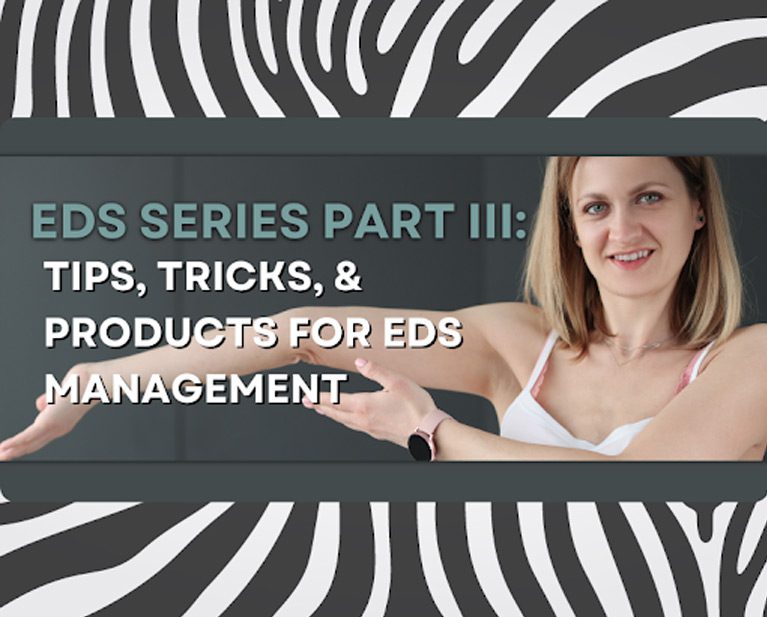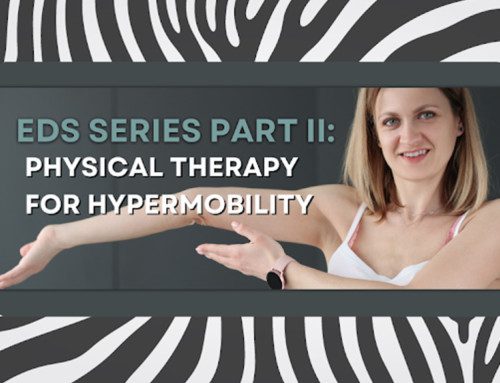Happy holidays, and welcome to Part III of SetPT’s EDS series! In case you missed it, check out Part I and Part II of our series to better understand the Ehlers-Danlos Syndromes (EDS) and how physical therapy can help.
As a reminder, this four-part series will discuss:
- What EDS is and how it’s diagnosed
- How we treat EDS in physical therapy and frequently asked questions
- Tips, tricks, and recommended products to help manage EDS at home
- Insight on pelvic health concerns in EDS from our pelvic floor PT, Aimee Schuh
In Part III of this series, I’m sharing tips and tricks for managing EDS and other Hypermobility Spectrum Disorders (HSD). Additionally, I’ve listed a few products that may help you or the loved one in your life who has EDS or HSD, just in time for the holiday season!
Tips and Tricks
- Avoid the party tricks, and always do less than you think in terms of motion. Party tricks are cool, yes, but they can create more long-term harm than you may realize. Avoid showing off your bendy skills if you can! And your version of “my knee is straight” is usually hyperextended. I always tell patients to do 50% of what you think is end range!
- Keep an eye out for the trifecta. Many individuals with EDS also deal with two other associated conditions: Postural Orthostatic Tachycardia Syndrome (POTS) and Mast Cell Activation Syndrome (MCAS). Check out SetPT’s POTS section to learn more about what POTS is. If it resonates with you, it may be worth looking into. MCAS is, in the simplest terms, an overactive allergy response to things that shouldn’t be triggering allergic reactions. This can impact your skin, GI system, and more. It may be worth looking up a good allergist if you notice frequent hives, flushing, sweating, wheezing, itchy mouth, runny nose, GI issues, and overall heightened allergic reactions.
- Figure out your migraine trends and triggers. Apps like MigraineBuddy can make a huge difference if you’re a frequent headache or migraine sufferer. Keeping track of your headache patterns may be helpful to figure out what exactly may be triggering these symptoms. It can be especially helpful to bring this information to your providers – they might be able to help you pinpoint the cause.
- Know what safe pain is. This is a tough one to figure out and takes some time. You may have a different pain scale than somebody without EDS. But when is pain safe, and when is it telling you to stop what you’re doing? This Pain Activity Traffic Light by the Shirley Ryan Activity Lab is a great guide I often use with patients and may be helpful to you, too.
- You’re not alone – find a good support system. Whether it be good providers or good friends, there are wonderful EDS/HSD support resources out there. I recommend finding EDS-aware providers, such as those listed in the healthcare professionals directory on the EDS Society website. They also have a directory of local support groups that can help guide you to finding good providers, helpful products, and more on your EDS/HSD journey. Facebook is also a great place to look for groups that may not be listed on this directory.
Want more tips and tricks? Keep an eye on Instagram! Both my personal page (@panziv) and SetPT’s page (@setpt) are often posting content related to this topic!
Perfect Products for the Hypermobile Person
The holidays are here! Do you know anybody with EDS or HSD or have it yourself? Using aids and products to help manage these symptoms can be invaluable to somebody with EDS or HSD. Check out some of my favorite and most frequently-recommended products; they might make for a good gift, whether to yourself or your loved one.
For Neck & Upper Back
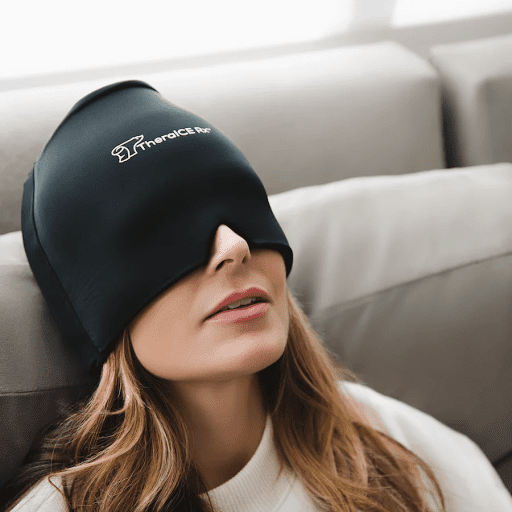 The Headache & Migraine Relief Cap by TheraICE Rx
The Headache & Migraine Relief Cap by TheraICE Rx
This wrap can be cooled or warmed and wrapped around your head to ease tension in tight muscles and reduce pain associated with headaches. It’s super comfortable and can even pull over your eyes if you have light sensitivity.
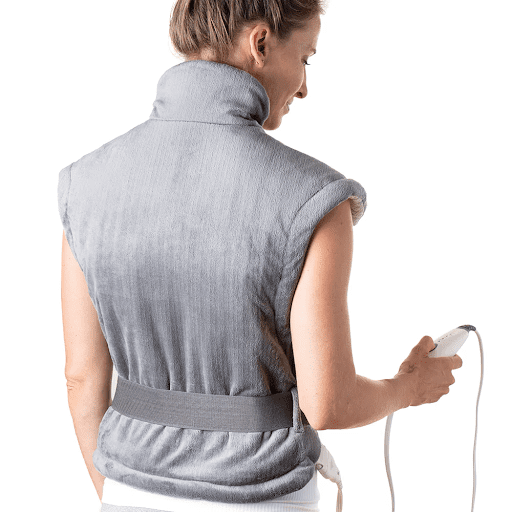 PureRelief™ XL Extra-Long Back & Neck Heating Pad by Pure Enrichment
PureRelief™ XL Extra-Long Back & Neck Heating Pad by Pure Enrichment
This heating pad covers your neck, shoulders, and back with magnetic clasps and a belt to keep everything snug and in place. It works great to ease muscle tension while you’re sitting for work or just relaxing on the couch.
Posture Shirt® for Women – Zipper by AlignMed
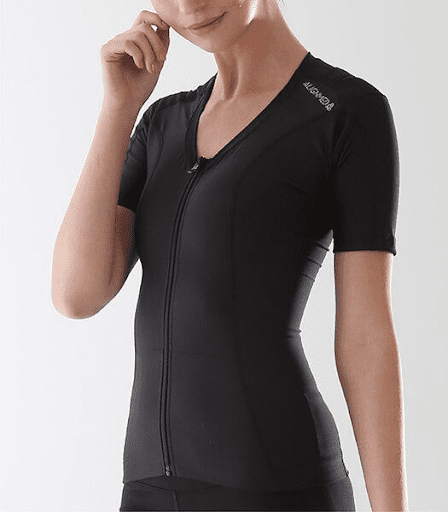 AlignMed makes this great posture shirt incorporating elastic postural supports to mimic Kinesiotape taping patterns. This product is my favorite of theirs because it zips in the front and doesn’t require you to pull a tight shirt over your head (and possibly dislocate a shoulder or two). They also make prescription-strength shirts for which a physical therapist can write a letter and possibly get covered by insurance. On top of that, they also make supportive bras and other gear, too.
AlignMed makes this great posture shirt incorporating elastic postural supports to mimic Kinesiotape taping patterns. This product is my favorite of theirs because it zips in the front and doesn’t require you to pull a tight shirt over your head (and possibly dislocate a shoulder or two). They also make prescription-strength shirts for which a physical therapist can write a letter and possibly get covered by insurance. On top of that, they also make supportive bras and other gear, too.
Disclaimer: I am an affiliate of AlignMed but have been recommending them for a long time. If you’d like a discount for a purchase, use my referral code link here.
For Lower Back & Pelvis
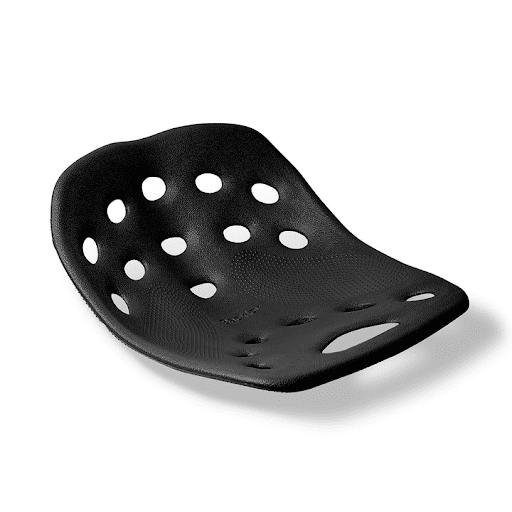 SitSmart Posture Seat Plus by BackJoy
SitSmart Posture Seat Plus by BackJoy
BackJoy makes this awesome posture seat that helps to place your pelvis and lower back in the right position when sitting. This helps everything up the chain but stacking your shoulders and neck properly, reducing pain and strain. It can be really helpful for lower back pain, too, and takes a lot of effort out of sitting properly.
Core Body Braid by Body Braid
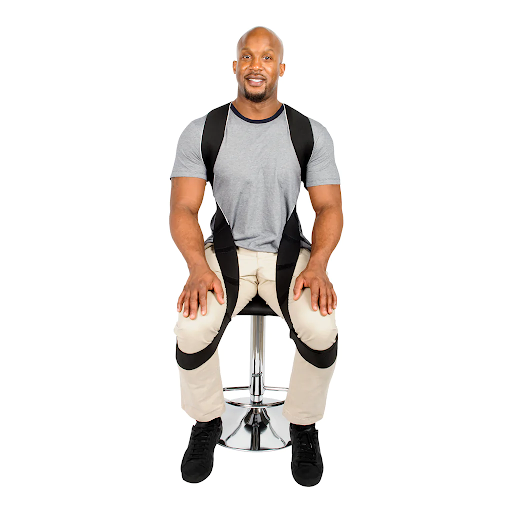
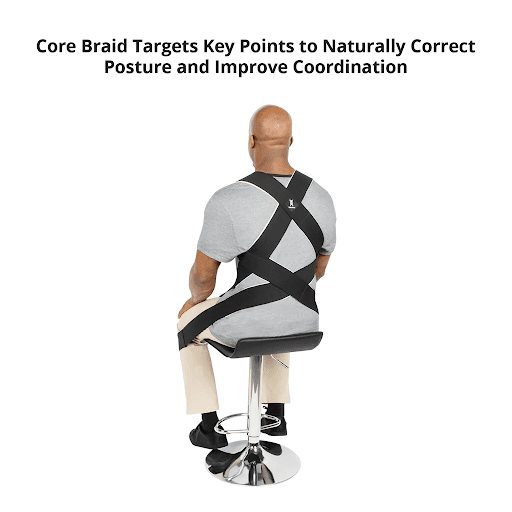 Body Braid is a postural support system that mimics the spiraling fascial lines of connective tissue in your body. When these lines of fascia are strong and working properly, they create a network of support and connect each body region. In EDS and HSD, however, these tissues are naturally weakened. The Body Braid can add additional support and feels completely natural. Unlike other posture devices, this doesn’t “force” you into any positions and is very adjustable. Definitely a hit among the EDS community!
Body Braid is a postural support system that mimics the spiraling fascial lines of connective tissue in your body. When these lines of fascia are strong and working properly, they create a network of support and connect each body region. In EDS and HSD, however, these tissues are naturally weakened. The Body Braid can add additional support and feels completely natural. Unlike other posture devices, this doesn’t “force” you into any positions and is very adjustable. Definitely a hit among the EDS community!
SI Joint Belt by Vriksasana
The sacroiliac (SI) joints are those little bony knobs above each glute and at the bottom of your lower back. They’re often a source of pain and instability in EDS. If you notice a lot of pain and popping in this area, or even hip or lower back pain, it may be a result of a hypermobile SI joint. This SI joint belt can be helpful to provide compression and stability in this area and may help some of the painful joints directly surrounding the SI joints!
For Shoulders, Wrists, & Hands
Ring Splints by Zebra Splints
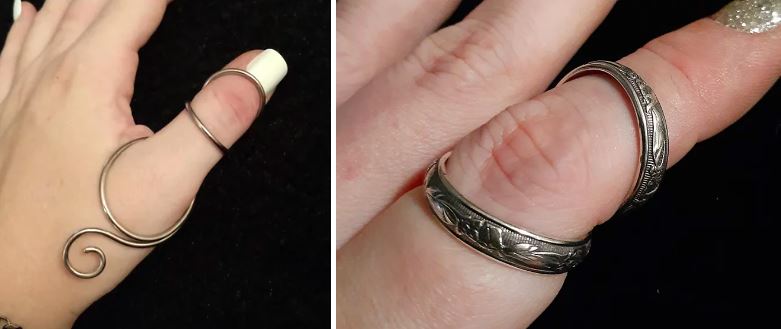 There are a lot of ring splint sellers out there, but Zebra Splints may be my favorite. Ring splints are devices designed to support hypermobile fingers and thumbs by restricting excessive motion. This can help reduce pain and prevent worsening of your already-mobile fingers. Zebra Splints makes custom splints that fit perfectly to your fingers and are designed to protect your fingers for your individual needs – they even make fun designs and use different metals (with allergies in mind, too).
There are a lot of ring splint sellers out there, but Zebra Splints may be my favorite. Ring splints are devices designed to support hypermobile fingers and thumbs by restricting excessive motion. This can help reduce pain and prevent worsening of your already-mobile fingers. Zebra Splints makes custom splints that fit perfectly to your fingers and are designed to protect your fingers for your individual needs – they even make fun designs and use different metals (with allergies in mind, too).
It’s usually helpful to have your fingers measured and splint type determined by a professional. At SetPT, I’m currently measuring patients and ordering splints. Sometimes, splints are even covered by insurance!
Pan Buddy™ by Kitchinventions
The Pan Buddy is a great invention that helps to improve leverage and decrease wrist strain when cooking. Many pans are heavy already, and with food added in, it can be really painful and difficult to maneuver over a hot stove. Check it out!
MX Vertical Wireless Mouse by Logitech
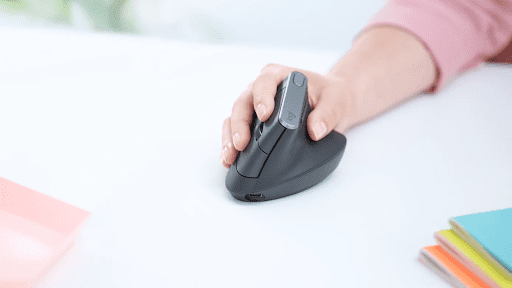
A vertical mouse can make a huge difference on your arm and shoulder placement when working at a desk, which can impact how your upper back and neck are positioned, as well. Rotating your arm outward rather than palm down helps your shoulder and shoulder blade to sit back properly, causing less strain and pain up the chain! This mouse is just one of many great vertical mouse options out there, so search around if you’re not sold on this one.
Want even more product recommendations? I’m posting on my Instagram (@panziv) for the first 25 days of December as part of an Ehlers-Danlos Advent Calendar. I share tips, tricks, and product recommendations daily to help make life with EDS a little bit easier.
Stay tuned for Part IV of this series, where our awesome pelvic floor PT, Aimee, will be sharing information about pelvic health and EDS.

